Busan, Korea’s largest port and second-biggest city, is a popular tourist destination with vibrant vistas and colorful activities. It is also a festival city with a rich offering of art and cultural events. The charm of Busan is an open and hybrid DNA forged over the ages.
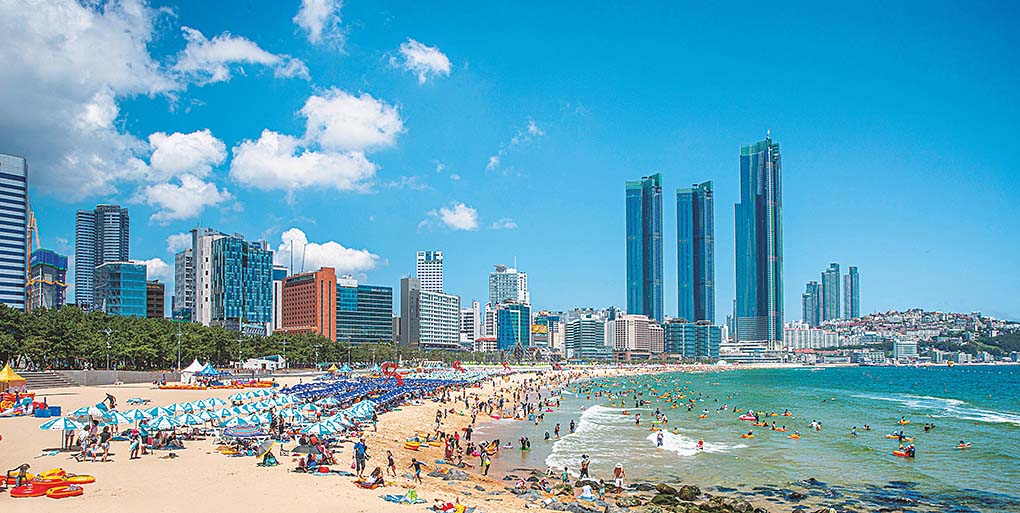
Haeundae Beach is Korea’s most popular summer holiday destination with more than 10 million annual vacationers. Besides the sun and surf, beachside walking trails, festivals, and leisure and entertainment facilities attract visitors all year round. On the edge, ritzy high-rise condominiums comprise the most expensive residential property after Seoul.
The Busan coastline, meandering over 300 kilometers along the southeastern edge of the Korean peninsula, is both delicate and rough. The cobalt blue waters of the East Sea become more relaxed as they drift into the South Sea. Along this lyrical curve of land, nature bestowed gifts for the ages, luring people who in turn have responded by entrusting their hearts and bodies to the shores. Sensitivity and imagination inspired by the ocean never lacked. So, Busan elicits a collage of dreams and beckons with sundry voices.
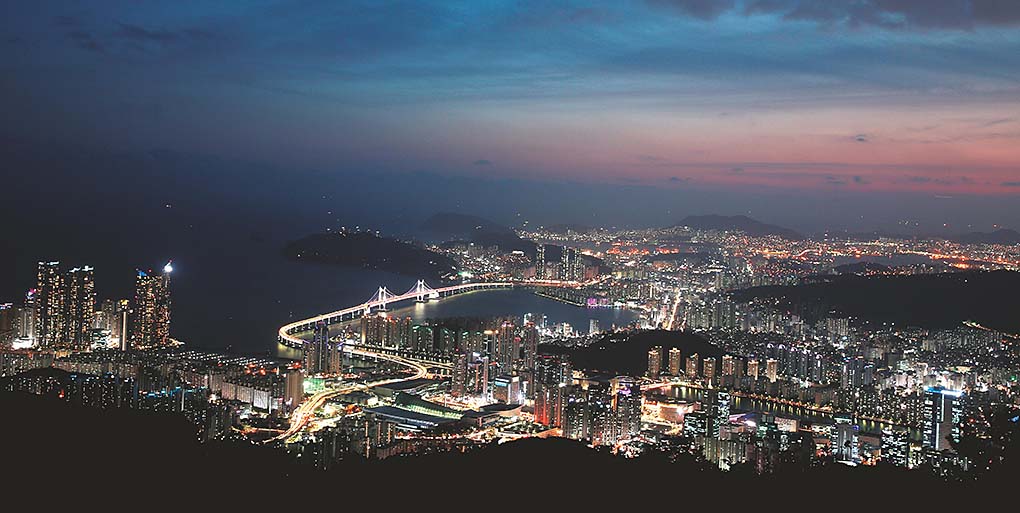
The Many Faces
Busan has seven beaches with chalk-white sands. At the eastern end of the city is Imnang Beach. Toward the western end, Songdo Beach, Korea’s first man-made beach, opened more than a century ago, and there also is Dadaepo Beach, home to the world’s largest musical fountain. The most crowded beach is Haeundae, which fills up calendars with its images and keeps the surrounding residential area the second-highest in property value after Seoul.
Also awaiting visitors are Igidae, Taejongdae and Morundae, all magnificent rocky cliffs washed by the sea. Retaining their primitive aura, these cliffs are covered with forests inhabited by rare and precious plants and animals. Viewed from the lush greenery, the sea seems even deeper and its beauty more intense. A leisurely sea cruise to absorb the night views of Busan is a romantic interlude that is not to be missed.
Sixty estuaries trickle into the sea along the coast of Busan. Finding a fishing spot where the horizon generously sprawls out is a special delight for anglers. And no foodie’s visit to Busan would be complete without locating the experienced women divers in the middle of the city and getting a taste of their catch fresh from the sea.
Then there are the splendid bridges. Spanning the ocean, they promise drivers an enchanting ride. If you drive across the Gwangan Bridge, the Busan Harbor Bridge and the South Harbor Bridge in succession, you will reach Songdo, the southern end of Busan. Then you will find the Busan Port that is bustling with giant cranes and containers, a safe anchorage and stopover for inbound and outbound freighters. Driving further, across the Eulsuk Bridge, will lead to the city’s western end.
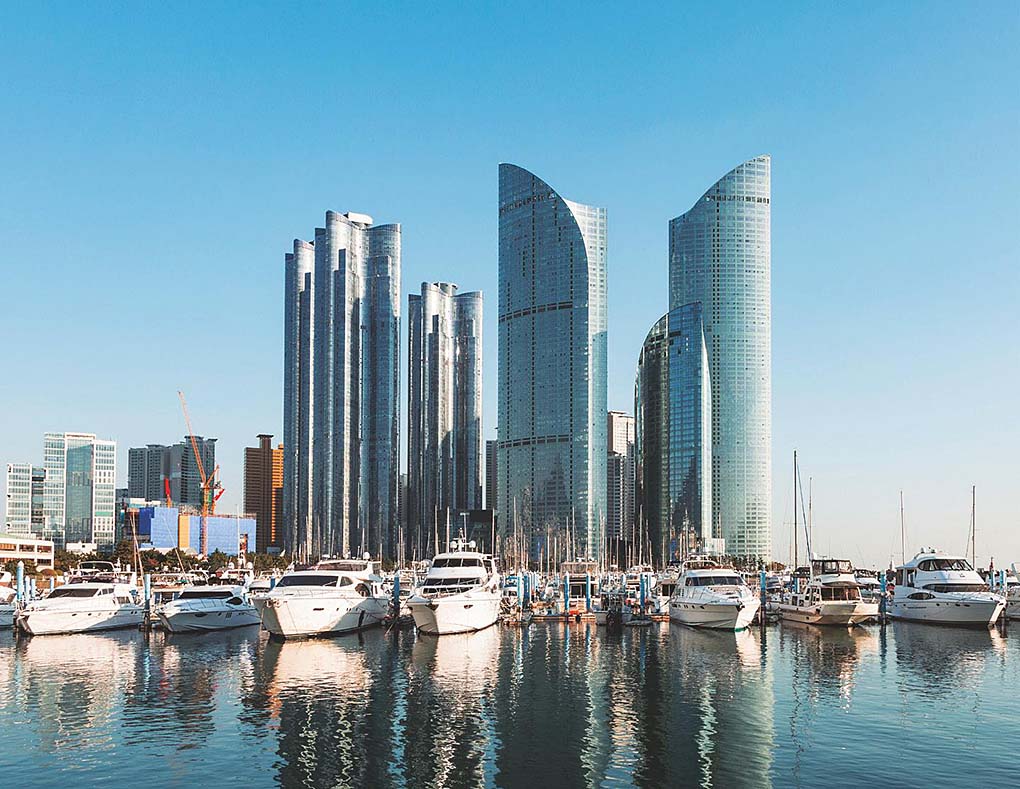
Suyeong Bay Yachting Center was completed in 1986 and officially opened in 1988. The yachting events of the 1986 and 2002 Asian Games and the 1988 Olympic Games were held here.© imagetoday
Hybridity and Individuality
The whispers of the sea evoke a myriad of images in our minds. For the sea endows us with an imagination tailored to our own experiences. Thus, when we stand at the shore, we come face to face with our own waves. For the young, the sea represents heart-pounding thrill; for the lonely, a lover; for the weary, sustenance of life; and for the angry, tips on tolerance. For workers, the sea means the source of livelihood, for writers a repository of stories, and for ship captains a journey to places far away. Then it comes across as the laws to follow for the wise, and as excitement for those who still have much to learn. In the morning, the sea may be a girl with long hair flying in the wind, and in the evening, an old lady with creased hands.
The scattering of Neolithic remains throughout the city attests to Busan’s deep roots as a fishing town. The villages dotting the serpentine coastline still retain the age-old customs of shaman rituals, as well as faith in Magohalmi, or Grandmother Mago, the giant goddess who created all nature, and faith in the Dragon King. As Busan evolved to become a metropolis, the serene villages were transformed into places crowded with people striving to earn a living.
Most notably, Busan has heaved and rolled with major events in Korea’s modern and contemporary history. During the Japanese occupation (1910–1945), it was the departure point for ferries shuttling to and from Japan. With the outbreak of the Korean War in 1950, the city became the tearful destination for refugees from around the country. Later, troops dispatched to the war in Vietnam and countless deep sea fishing boats used the Busan Port as the point of departure and eager return.
Whenever people flooded in, Busan was obliged to find them food and shelter. And each time, the city gave everything it had to give. Throughout its long history, Busan thus acquired openness and liberalness. And when immigrants were accepted, disparate cultures intermingled, turning Busan into a cultural melting pot. The resulting hybridity is the true “spirit of Busan.”
Hybridity and tolerance are the two sides of the same coin. The capacity to tacitly cope with all the grueling historic events comes from Busan’s generous spirit. Such generosity has formed the character of its residents, and consequently sown a flourishing local culture. The energetic and creative nature of Busan natives drives its thriving popular culture, encompassing traditional folk arts, pop songs, movies and festivals.
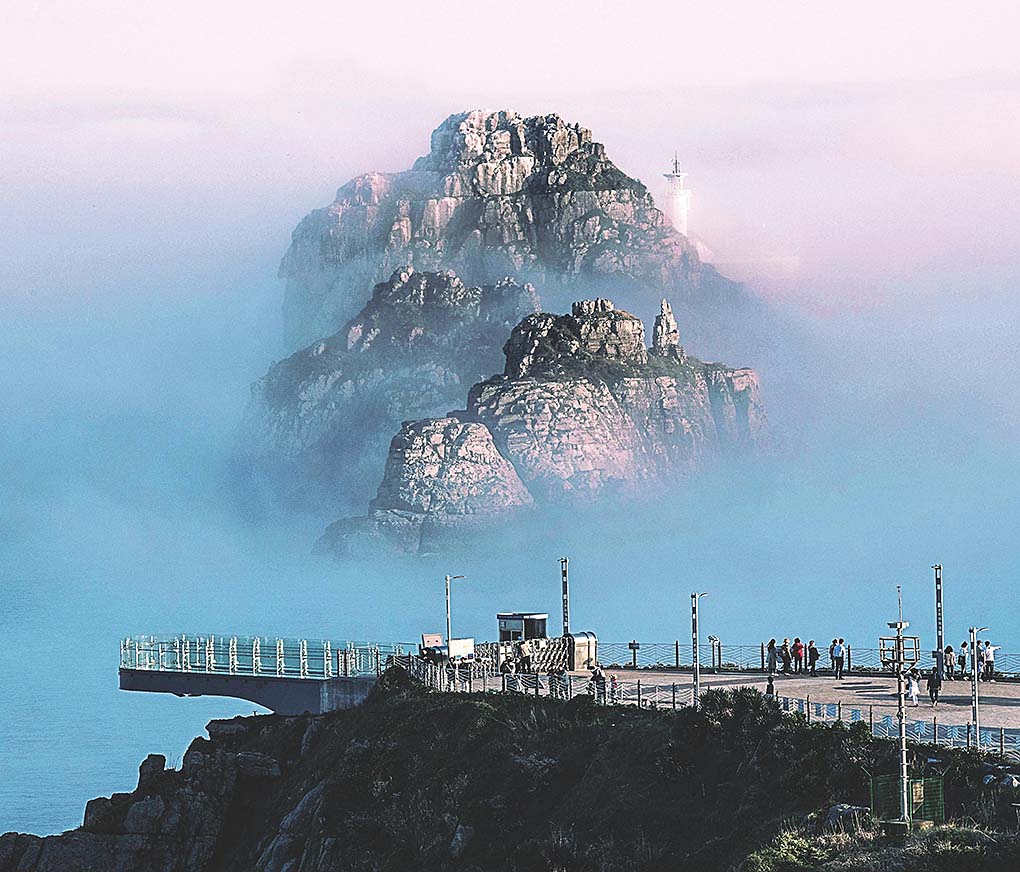
Oryuk Islets (meaning “five-six islets”) at the mouth of Busan Bay are a symbolic landmark of Busan and state-designated Scenic Site No. 24. Among the islets, only Deungdaeseom (Lighthouse Islet) is inhabited. © Busan Metropolitan City (Photographer Kwon Jeong-uk)
Whenever people flooded in,
Busan was obliged to find them food
and shelter. And each time, the city gave
everything it had to give.
Throughout its long history, Busan thus acquired openness and liberalness. And when immigrants were accepted, disparate cultures intermingled, turning Busan into a cultural melting pot. The resultinghybridity is the true “spirit of Busan.”
Hybridity and tolerance are the two sides of the same coin. The capacity to tacitly cope with all the grueling historic events comes from Busan’s generous spirit. Such generosity has formed the character of its residents, and consequently sown a flourishing local culture. The energetic and creative nature of Busan natives drives its thriving popular culture, encompassing traditional folk arts, pop songs, movies and festivals.
Hillside Dreams
The hillside neighborhoods are another lyrical facet of Busan. Through the Korean War and subsequent industrialization, the city expanded, and needy people built their shanties high on the hillsides. Peering past the overlapping s of roofs and water tanks, a different Busan emerges below. To those who led honest lives in the neighborhoods, the sea was like a faraway door that had to be opened. They opened that blue door onto their lives, onto their dreams, and onto the Pacific and Atlantic oceans.
Born in the hillside neighborhood of Yeongdo, I grew up gazing at Busan’s nocturnal sea through a cracked window. At night, a gigantic ship lay in anchor. The light spilling out was glorious, like threads of gold and silver strewn over the dark water. After the ship departed, another one would replace it. That is how I learned about the depth and breadth of the world. The imagination that the sea taught me to use enabled me to live as I do now, as a poet and wanderer, roaming the world lugging a backpack.
In Busan, the sea is not something that comes to those who wait but a door that one must reach out and open. In the seaside atmosphere to which the blue door leads, a rich offering of cultural festivals awaits: the Busan International Film Festival, the Busan Biennale, the Sea Art Festival, the Busan International Rock Festival, the Busan International Performing Arts Festival, or the International Sea Literature Festival. Among this growing number of festivals are some that have gained international renown.
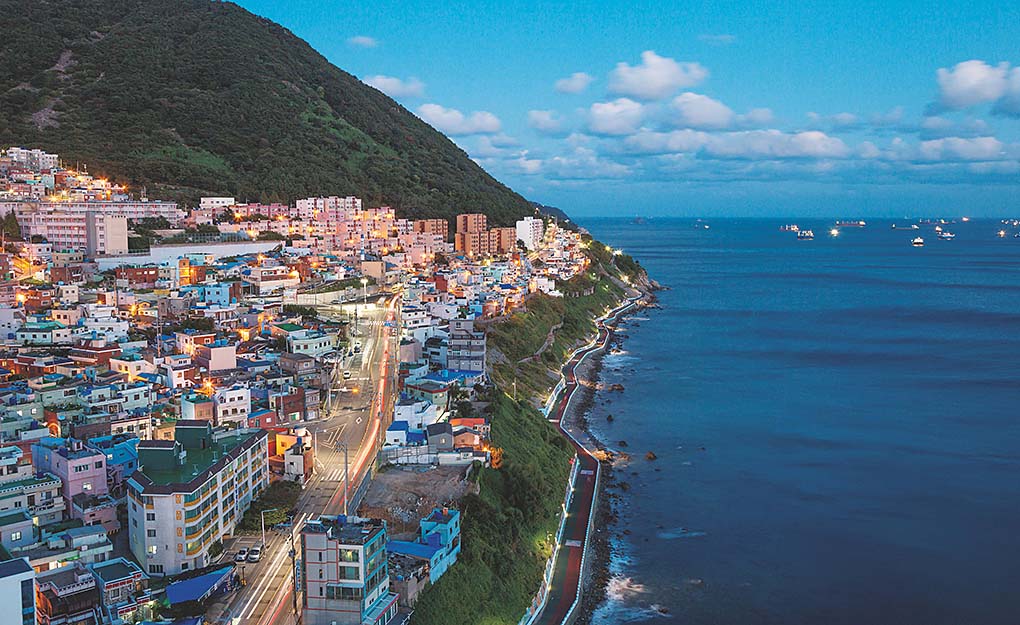
A 14.15km² island lying off the southern coast of Busan, Yeongdo sheltered refugees of the Korean War. In 2011, renovation work on the island created Huinyeoul Maeul (White Rapids Village), which is now a well-known location in movies and TV shows. The Japanese island of Tsushima is visible from a 3-meter-high embankment here.© Busan Metropolitan City (Photographer Kwon Gi-hak)
Dynamic Culture
Busan also hosts assorted festivals with a strong regional flavor. The Busan Jagalchi Festival is a reminder of the city’s infinite connection to the sea. The festival includes a rite to pray to the Dragon King (yongsinje) for safe journeys and an abundant catch of fish as well as a rite to appease the souls of fish. At the Haeundae Sand Festival, artists from numerous countries sculpt sand into statues and structures. And every autumn, the Busan Fireworks Festival embroiders the night sky with color and light. The Anchovy Festival is as lively as the thrashing waves; the Busan Sea Festival opens simultaneously on five of the city’s beaches; and countless other events with a maritime theme offer fun and romance all year round.
On another note, the B-boy (break dancing) competitions at Mt. Yongdu Park exude the passion and wildness of Busan. The temperament that has molded the spirit of Busan has also turned the city’s culture into the people’s power. Non-mainstream fields of art and culture, such as indie art and art criticism, have become firmly established as a source of the creative strength behind Busan’s identity.
All of this occurs against a backdrop of shimmering waves. The iridescent waters embrace in-visible but constantly rolling ripples that become a poem ringing out in a deep voice, warm and strong.
Heart-Warming Landscapes
Depicted on Denim
Kim Soo-woo Poet
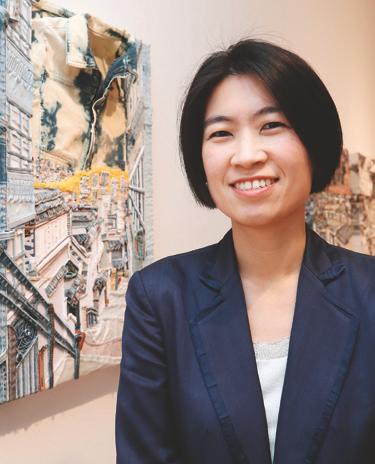
Using denim rather than paint as her main material, Choi So-young captures her hometown of Busan on canvas. More than 10 years ago, when she was in her 20s, one of her denim collages fetched hundreds of thousands of dollars at a Christie’s auction in Hong Kong.© Yonhap News Agency
Choi So-young is recognized as one of the foremost artists capturing the scenic and aesthetic characteristics of Busan. In her hands, a pair of faded blue jeans becomes the material for her next project. Thus, the sea, the mountains and the roads of Busan are pieced together in a heart-warming landscape on denim.
Dynamic Culture
Jeans look good on everyone, irrespective of age or gender. Transcending the gap between rich and poor in any country, in any place around the world, jeans are worn by so many people. Of course, there are luxury brand jeans but in general, denim jeans have no class distinctions. So, I believed it would be possible to communicate with the world simply using jeans as my material. I also like to express nature-friendly themes such as the sea, mountains and houses with cloth that has the feel of handiwork. I first tried using denim from a worn-out pair of jeans when I was in my second year of university, and gradually moved on to bigger pieces.
What do you consider Busan’s most distinguishing feature?
The sea, of course. I love my hometown, Busan. The great thing about this city is that there is always somewhere to go, even if you walk around all day long. The mountains, rivers and the sea all welcome people with open arms. I grew up playing on the sand at Haeundae Beach and from childhood I have loved the infinite blue of the horizon. Although the work that goes into my paintings is minutely detailed and complicated, I want the final work to be round and humble and full of feeling — like the sea that I love.
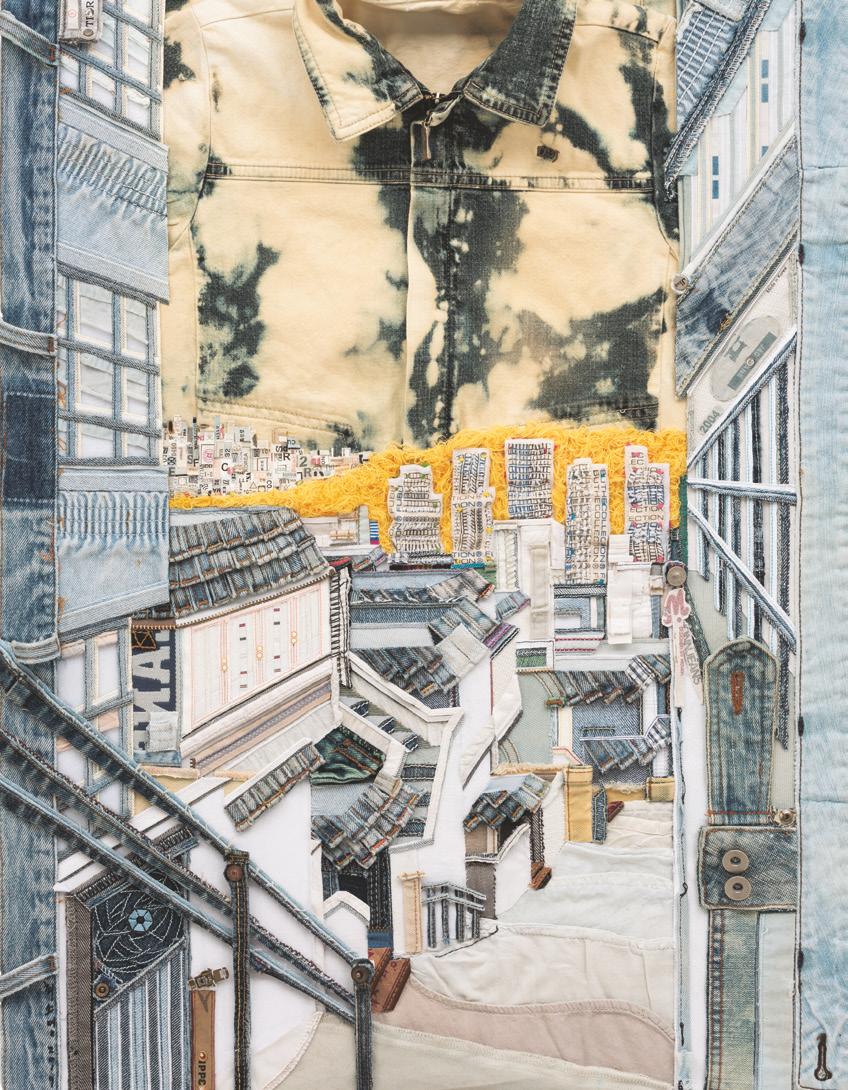
“Opening the Skies.” 2019. Denim on canvas. 73 × 53.3 cm.
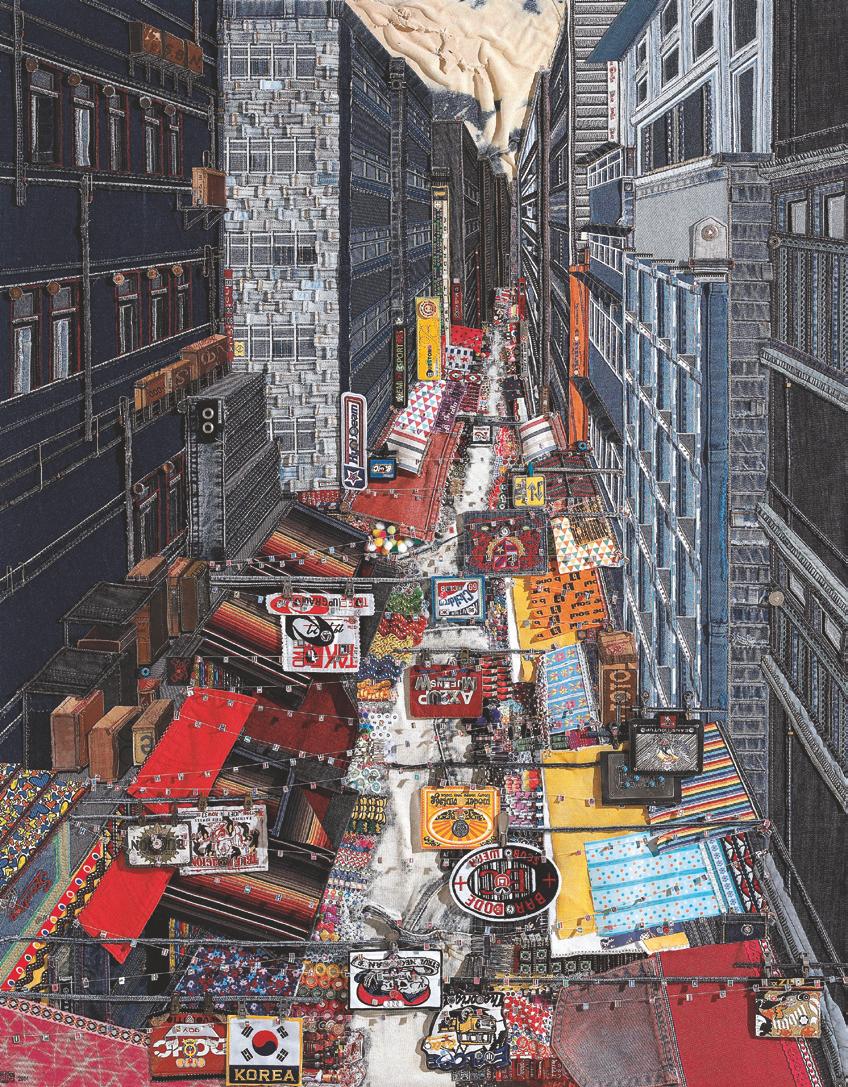
“Food Alley II.” 2014. Denim on canvas. 116.5 × 91 cm.
What value should people seek the most today?
I think people need to protect themselves and keep themselves whole. That is, we need to become our true selves. Although you may seem insignificant and trivial to others, it is important to be true to who you are. Those who protect themselves will also protect others. When you have a world of your own, that’s when your light shines and shows on your face. I’m happy when I think, “I can do this, I just have to go ahead and do it.” Your achievements, whether it’s getting into university or opening a solo exhibition, these things are your own world.
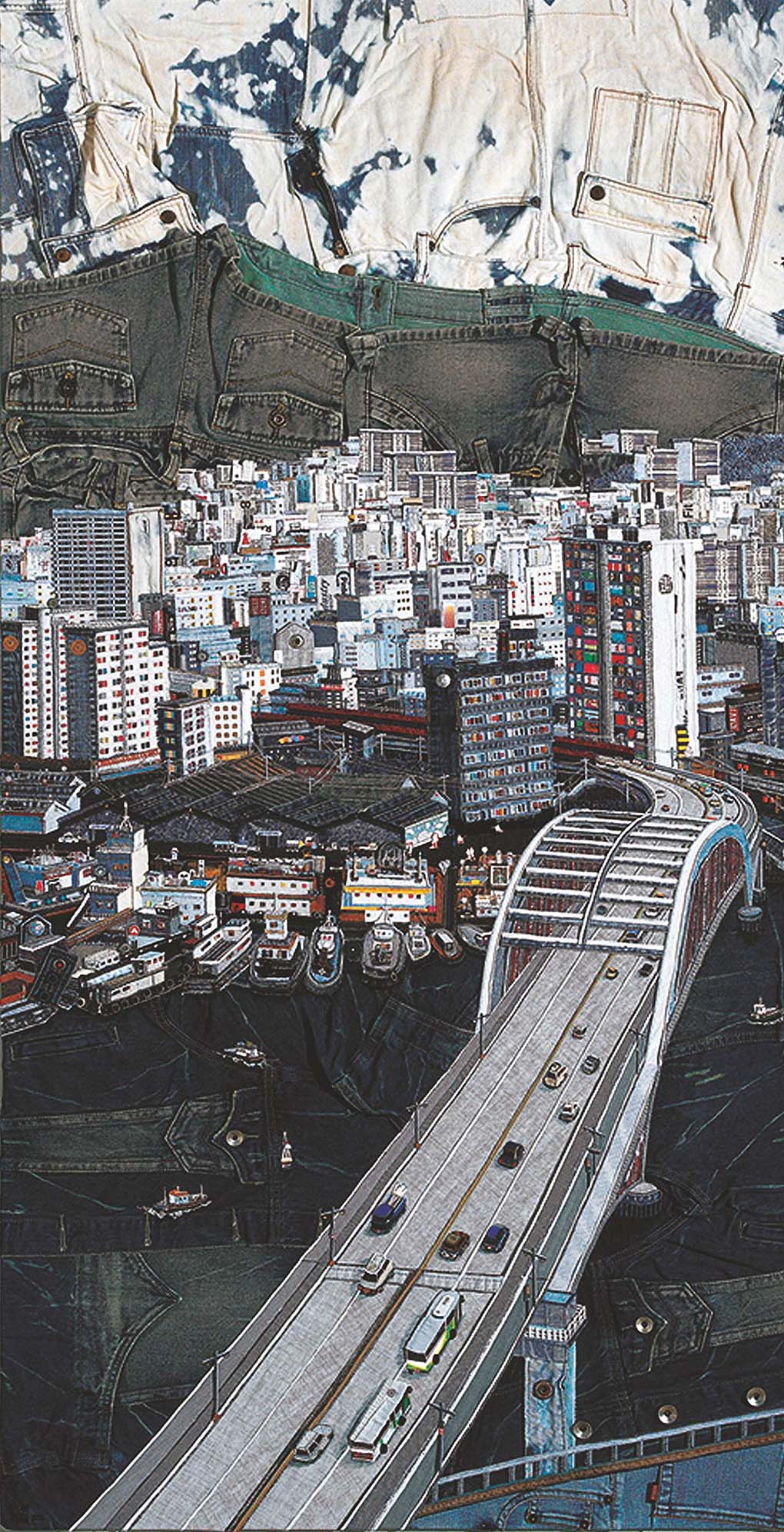
“Yeongdo Bridge II.” 2013. Denim on canvas. 160 × 81.5 cm.
What are your plans for the future?
I plan to travel for a while. Then I intend to seek enhanced quality of life through yoga and meditation, a vegetarian diet and hiking. Material things and accumulating fame are not that important to me. I am slowly and deliberately adopting ways to be true to myself without getting caught up in fame or achievements.
Say Sue Me Thanks Elton John
Ryu Tae-hyung Music Columnist
Say Sue Me is a Busan band with a surf rock sound. Over beers in 2012, four musicians — Choi Su-mi (vocals and rhythm guitar), Kim Byung-kyu (lead guitar), Ha Jae-young (bass) and Kang Se-min (drums) — decided to form a band. They have progressed from a practice studio near Gwangalli Beach to Busan bars and now to global gigs. Along the way, drummer Kang Se-min had a fatal accident shortly after the group started to work on its second album. The current drummer is Lim Sung-wan.
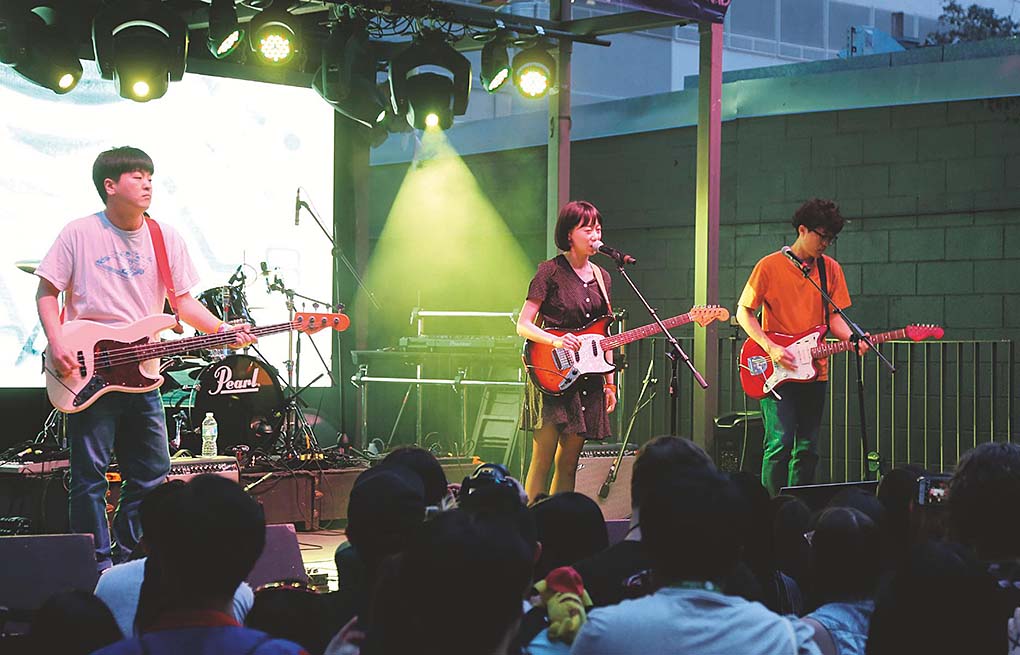
Say Sue Me perform at SXSW, one of the world’s largest music festivals, held in March 2018 in the U.S. state of Texas. © Yonhap News Agency
What influence has Gwangalli Beach had on your music?
When composing or performing music, there are times when you hit a wall. At those times, we go for a walk along the beach or take some fried chicken and beer and sit on the sand and rest for a while. Although it’s probably the same for all kinds of work, in creative work the most important thing is airing out your emotions, and in that respect we’re really quite fortunate.
What musicians were influential or role models?
There’s no need to go into each member. All of us were influenced by Pavement and Yo La Tengo. We recently met Yo La Tengo and since then, we are admiring them more than ever.
How does Busan’s indie music scene compare to other regions?
It has its own unique character. Bands here don’t worry about trends. We play what we like, without thinking about what kind of music other bands are playing or the latest trends in the indie scene.
What did you think when Elton John introduced your song “Old Town” on radio?
At first, we didn’t realize what an amazing thing it was. It was only after we looked up the program later and listened to him that we were suddenly overcome with pride and happiness.
Could you explain your song-making process?
First, Byung-kyu makes a demo tape and everyone listens to it. Then we decide which songs are worth developing and Su-mi writes the lyrics for them. Then we do the guide recording and work on the arrangement until we feel the song is finished.
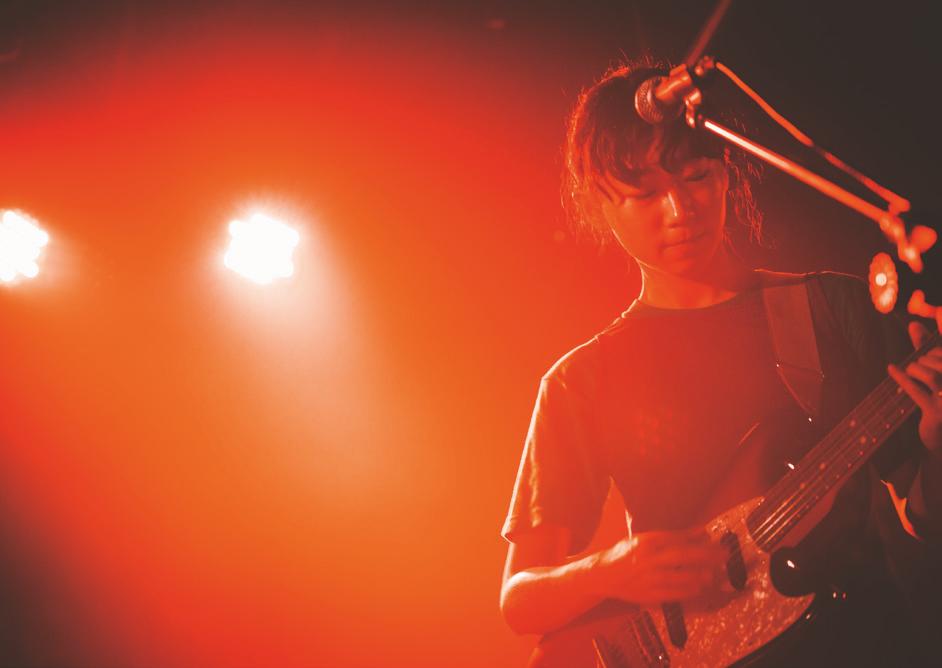
Singer and rhythm guitarist Choi Su-mi on stage at the Megaport Music Festival held in March 2019 in Kaohsiung, Taiwan. © Hung Shu Chen
What are your reactions when you get overseas invitations?
In most of the cities where we performed, we found that people came to the concerts regardless of whether it was a weekday or weekend, and that the audience was a mixture of all generations. These are two points that are very different from the Korean scene. It made us think how good it would be if our concert scene changed to that one day, so that more people would come with their parents.
What are your future plans?
Our new album came out in October. It’s a double single, with the tracks “Good People” and “Your Book,” and we’ll be playing in various cities with these songs. From December 3 to 13, we’ll be touring North America, starting with Toronto and moving onto Chicago, San Francisco and Seattle. Next year, we plan to release our third studio album.
Say Sue Me’s recordings (from left): first studio album “We’ve Sobered Up” (2014), EP “Big Summer Night” (2015), second studio album “Where We Were Together” (2018), double A-side “Just Joking Around / B Lover” (2018), EP “Christmas, It’s Not A Biggie” (2018), and double A-side “Your Book & Good People” (2019).
Kim Soo-wooPoet